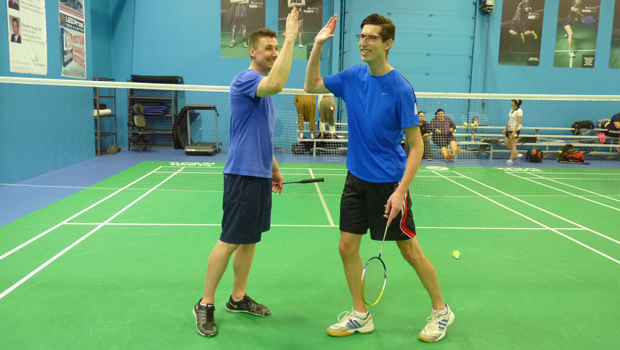
For beginner level players, teammates will sometimes discuss before a match ‘would you like to play front and back or sides’… and sometimes they just play not knowing what that even means. Depending on player skillset or preference, teams might choose to do one or the other (or neither) and maintain this positioning throughout the entirety of the match. Unfortunately, this can make it difficult to be successful in matches, especially if you play against skilled opponents. The truth is, there is no one formation between front/back and sides that is better than the other; it is very situational. Let’s dig in a bit deeper here shall we?
First of all, what does ‘front/back vs. sides’ even mean? In doubles, this refers to the positioning on the court that each partner will take during a rally. For example, in front/back, one partner will play at the back of the court while the other partner is up closer to the net. Sides refers to each partner occupying a side of the court, both partners being approximately halfway back on their side of the court. So, if playing in a front/back vs. sides formation is situational, what the heck are the different situations??? That’s why you’re still reading this article silly, settle in.
It breaks down into offense versus defense. When a team is able to hit the shuttle down (smash, drop shot, and net shot) partners should be set up in a front/back formation. This allows for better positioning when attacking the shuttle. If the opponent plays a drop or net shot, the partner at the front is close by and prepared to play an attacking shot. Meanwhile, if the opponent plays a lift (clear) to the back of the court, one of the partners is positioned in the back of the court and prepared to play an attacking shot.
For defensive rotation, players should be positioned in a side by side formation when they are forced to play any defensive shot e.g. clear. When the shuttle is lifted to the opponent’s side, you have to be prepared for the other team to attack the shuttle (shot types listed above). The hardest shot to return is often a well-placed smash. As such, partners need to setup in a side by side formation in order to cover the most area of the court and to allow proper spacing from the shuttle to your body (uhhhh what?...). Let’s make this a bit more simple. Imagine you and your partner are playing front/back and you lift it to the opponent. The opponent smashes the shuttle directly at whichever partner is standing at the front of the court. A couple things are likely to happen here: 1) If you are not prepared with your racquet up, chances are you might get hit in the face with the shuttle, ouch! 2) Because of how close you are to the front of the net, you have much less time to react to the smash, making it harder to return properly.
Now that I’m out of breath from explaining all of that, let me sum up this article by giving you and your partner one golden rule that will dramatically improve your offense and defense: Anytime you lift the shuttle, go sides! Otherwise, set up in front/back.



























